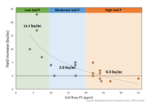Advertise Follow Us
Items Tagged with 'University of Nebraska'
ARTICLES
No-Till Farmer Influencers & Innovators
[Podcast] Taking a Systems Approach to No-Till with Paul Jasa
In this episode of the “No-Till Farmer Influencers & Innovators” podcast, brought to you by Martin Industries, No-Till Farmer editor Frank Lessiter talks with Ag engineer Paul Jasa with the University of Nebraska about his many years studying no-till.
Read More
[Podcast] Pest Management in a No-Till, Cover Crop System
In this episode of the No-Till Farmer podcast, brought to you by Yetter Mfg., we're joined by Douglas Jones, an entomologist for Bayer Crop Science working in Nebraska where he does field research and trials on 60 acres of cropland.
Read More











